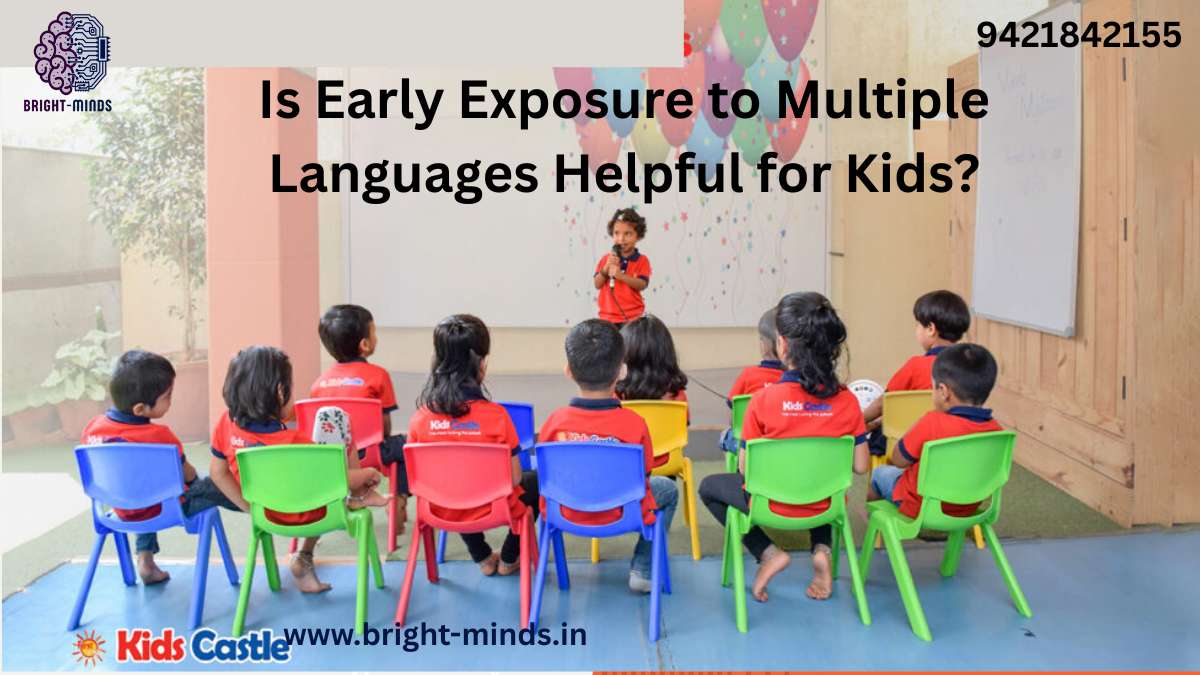In today’s globalized world, the ability to communicate across cultures is more valuable than ever. Parents often wonder: Is it helpful to expose children to multiple languages at an early age? The short answer is yes—early exposure to languages not only boosts communication skills but also enhances brain development, emotional intelligence, and future career opportunities.
But let’s dive deeper. From academic research to market trends, we’ll explore why multilingualism is a superpower for kids, how families and schools can nurture it, and what this means for the future workforce.
Why Early Language Learning Matters
Children are naturally wired to learn languages. In the first few years of life, their brains are incredibly flexible, making it easier to pick up new sounds, vocabulary, and grammar. This “window of opportunity” gives children an advantage in mastering multiple languages without the struggle adults often face.
Some key benefits include:
- Cognitive Development – Studies show that bilingual and multilingual kids often have stronger memory, problem-solving, and multitasking skills.
- Cultural Awareness – Exposure to different languages helps children appreciate diversity, empathy, and global perspectives.
- Academic Success – Research suggests that children fluent in multiple languages perform better in reading, writing, and analytical thinking.
- Long-Term Career Benefits – Multilingual employees are in high demand across industries such as technology, healthcare, tourism, and international business.
Industry Insights: Multilingualism as a Global Skill
- Education Sector: Schools worldwide are incorporating bilingual programs and language immersion classes. For instance, French-English or Spanish-English schools are becoming increasingly popular.
- Corporate World: Companies with international operations actively seek employees who can speak multiple languages. A 2025 LinkedIn survey showed that multilingual professionals earn, on average, 10–15% more than their monolingual peers.
- Technology & AI: With global teams and cross-border communication, businesses now rely on multilingual employees to manage diverse client bases.
Clearly, learning multiple languages is not just about communication—it’s about preparing children for a world where cultural and linguistic fluency is a competitive edge.
Real-World Applications: Why This Matters Beyond Childhood
Imagine a child growing up in India speaking Hindi at home, English at school, and learning Spanish as a hobby. This child develops:
- The ability to switch between tasks quickly.
- Enhanced listening skills and adaptability.
- A mindset open to cultural diversity.
Later, as an adult, these skills translate into leadership qualities, better teamwork, and confidence in global workplaces.
Practical Tips for Parents and Educators
So, how can you encourage early exposure to multiple languages without overwhelming your child? Here are some proven strategies:
- Start with Everyday Conversations
Use different languages during simple routines—greetings, meals, or bedtime stories. Children absorb these naturally. - Leverage Multimedia
Educational cartoons, songs, or audiobooks in different languages make learning fun and engaging. - Enroll in Language Classes or Immersion Programs
Bilingual schools and weekend language workshops provide structured learning environments. - Travel and Cultural Exposure
Even short trips or cultural events expose children to real-life use of languages. - Be Consistent and Patient
Don’t expect fluency overnight. Encourage regular practice and celebrate small progress.
Market Trend: Language Learning Apps for Kids
The rise of digital tools has made multilingual learning accessible to every family. Apps like Duolingo Kids, Lingokids, and Gus on the Go are designed specifically for children. They combine games, stories, and interactive activities to make learning enjoyable.
With the edtech industry booming, experts predict that language learning apps for children will grow significantly in the next decade, proving just how important multilingualism has become.
The Long-Term Payoff
Early exposure to multiple languages is more than an academic advantage—it’s an investment in a child’s personal and professional success. By fostering these skills early, children grow into adults who are not only intelligent and adaptable but also culturally aware and globally competitive.
Think of it like financial literacy—starting early creates lifelong benefits. Just as saving from a young age builds wealth, learning multiple languages from childhood builds cognitive and career capital.
Taking the First Step
If you’re a parent or educator, the journey starts with simple daily habits. A bedtime story in French, a Spanish nursery rhyme, or practicing Mandarin phrases can spark curiosity and lay the foundation for lifelong success.
👉 Want to go beyond the basics? Explore our advanced language learning resources and curated courses on our website to help your child unlock the gift of multilingualism and thrive in a global future.
you may be interested in this blog here:-
Phonics Worksheets for Kindergarten PDF Fun Literacy Stations!

